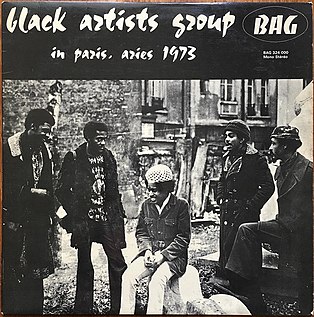Related Research Articles
Jeter-Pillars Orchestra was an American jazz troupe, led by altoist James Jeter and tenor-saxophonist Hayes Pillars.

Harold "Shorty" Baker was an American jazz trumpeter.
Sam Lazar was an American pianist and Hammond organist originally from St. Louis, Missouri, United States. A mysterious figure who disappeared from the music scene in the early 1960s, he is best known for fronting a group that included early work from guitarist Grant Green. Lazar's career was heavily influenced by fellow organist Jimmy Smith.

Sumner High School, also known as Charles H. Sumner High School, is a St. Louis public high school that was the first high school for African-American students west of the Mississippi River in the United States. Together with Vashon High School, Sumner was one of only two public high schools in St. Louis City for African-American students and was segregated. Established in 1875 only after extensive lobbying by some of St. Louis' African-American residents, Sumner moved to its current location in 1908.

Lawrence Leo "Snub" Mosley was an American jazz trombonist.
Irving "Mouse" Randolph was an American swing jazz trumpeter.
Singleton Palmer was an American jazz multi-instrumentalist and bandleader of the Dixieland Six.
Dewey Jackson was an American jazz trumpeter and cornetist.

Peacock Alley was one of St. Louis's most important jazz clubs in the 1950s. It was located in the former Mill Creek Valley neighborhood at 2935 Lawton Boulevard. It was close to Union Station, so it was favored among musicians due to the proximity. The venue was initially opened in 1944 in the basement of Midtown Hotel as the Glass Bar. In 1955, the Glass Bar was remodeled and renamed to Peacock Alley. Some sources report that it was located in Gaslight Square, although this is incorrect. It attracted performances from Miles Davis, John Coltrane, the Chet Baker Quartet, J.J. Johnson, Max Roach, Kai Winding, Art Blakey and many others.
Baikida Carroll is an American jazz trumpeter.
The Rhumboogie Café, also referred to as the Rhumboogie Club, was an important, but short-lived nightclub at 343 East 55th Street, Chicago.
Phillip Sanford Wilson was an American blues and jazz drummer, a founding member of the Art Ensemble of Chicago, and a member of the Paul Butterfield Blues Band.

Eugene Frederick Rodemich was a pianist and orchestra leader, who composed the music for numerous films in the late 1920s and early 1930s, mostly cartoons and live-action short subjects produced by The Van Beuren Corporation and distributed by RKO Radio Pictures.
Edith North Johnson was an American classic female blues singer, pianist and songwriter. Her most noted tracks are "Honey Dripper Blues", "Can't Make Another Day" and "Eight Hour Woman". She wrote another of her songs, "Nickel's Worth of Liver Blues".
LeRoy Watts Harris Jr. was an American jazz reedist. He was the son of Leroy Harris Sr., and his uncle was Arville Harris.
Theodore Vincent Bibb, was an American jazz drummer. He was one of a number of St. Louis musicians who served in the military during the World War II era. "During his music career he performed with Dewey Jackson, “Peanuts” Whalum, Oliver Nelson, the George Hudson Orchestra, and Singleton Palmer." Bibb died on November 21, 2010, at the age of 92.
Floyd LeFlore (1940–2014) was a jazz composer, trumpet player, and poet from St. Louis. In 1968, LeFlore helped to found the Black Artists Group (BAG).
Vertna Saunders was an African-American cornettist and trumpet player based in the Missouri jazz scene of the early 20th century. Saunders was in the University of Kansas Band and became established as a jazz musician in Kansas City, Missouri. He visited New Orleans while performing on a riverboat. Saunders joined Eddie Johnson's band in 1934 and worked with Lester Young at that time. He learned to read music from a fellow jazz musician.
Chestnut Valley was an African American section of St. Louis centered on Market Street, Targee Street, and Chestnut Street. It existed from the late 19th century serving steamship workers plying their trade on the Mississippi on into the 20th century. These were segregated eras. Chestnut Valley was a font of ragtime music development with Tom Turpin's Rosbud Café from 1900 to 1906 succeeding venues and later his brother Charles H. Turpin's Booker T. Washington Theatre. Mill Creek Valley, home to Scott Joplin and Josephine Baker, was adjacent. Union Station was nearby.

In Paris, Aries 1973 is a live album by the Black Artists Group, featuring saxophonist Oliver Lake, trumpeters Baikida Carroll and Floyd LeFlore, trombonist Joseph Bowie, and drummer Charles "Bobo" Shaw. The album was recorded in 1973 in Paris, and was initially self-released in very limited quantities. It was reissued in 2011 in a limited edition of 500 LPs by Rank and File Records, and was remastered and reissued on LP by Aguirre Records in 2018, with extensive liner notes by Julian Cowley, again in a limited edition of 500 copies.
References
- ↑ Owsley, Dennis (2006). City of Gabriels : the history of jazz in St. Louis, 1895-1973. Reedy Press. p. 63. ISBN 1933370041. OCLC 71122278.
- 1 2 Owsley, Dennis (2006). City of Gabriels : the history of jazz in St. Louis, 1895-1973. Reedy Press. p. 62. ISBN 1933370041. OCLC 71122278.
- 1 2 "Information on Hayes Pillars". www.siue.edu. Retrieved 2019-02-24.
- Rye/Kernfeld, "Hayes Pillars". Grove Jazz online.